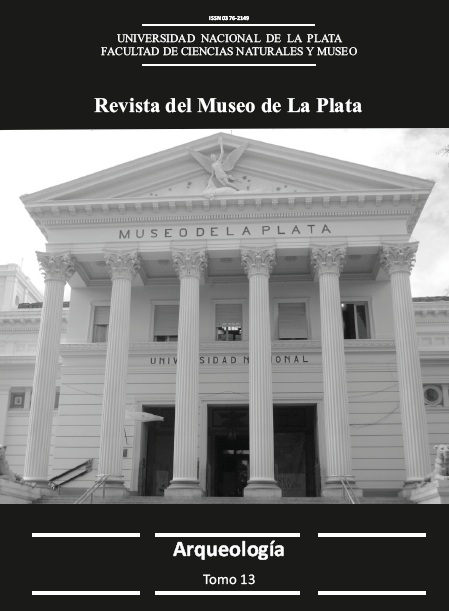Potenciales fuentes de aprovisionamiento para la manufactura cerámica: sitio Guayacas, Paysandú, Uruguay
Keywords:
Pottery, Ceramic Paste, Raw Material Gathering,Abstract
The following paper presents pottery studies results from the Guayacas archaeological site. The main research goal was to identify clay or mud and temper sources. The site is located at 31°30?24.58??S and 57°56?50.88??W in Paysandú County, Guayacas area, over a gentle hill by the Daymán river, 7 km east of Uruguay river. According to TLD performed on pottery, the site was inhabited among 1471±12 and 1556±18 AD. DRX analysis allowed the identification of potential source areas, which are linked to modern alluvial deposits in the site surroundings. Thin section analysis highlighted the presence of biosiliceous material in the ceramic pastes (mainly sponge spicules) at an unusual concentration that suggests intentional use as a temper agent. To contrast such hypothesis, samples from natural clay deposits and sponge spicules reference collections were screened under microscopy. Simultaneously, experimental studies were carried out, making pottery tablets by combining different concentrations of clay and biosilica, and the resulting pottery was also microscopically analyzed. Obtained results allowed to infer that the whole pottery making process was locally undertook, with clay sources at no more than 2 km away from the site, and that the inclusion of sponge spicules in the raw mix was intentional. Such behavior or technical particularity has been widely reported by southern Brazil ethnographers and could be linked with pottery techno-functional attributes.Downloads
Published
Issue
Section
License
La publicación en la RMLP se realiza bajo los términos de la licencia de uso y distribución Creative Commons BY-NC-SA 4.0 para Argentina (https://creativecommons.org/licenses/by-nc-sa/4.0/) que permite a terceros la distribución, la copia y la exhibición del artículo siempre que citen la autoría del trabajo, la publicación en la RMLP, número concreto y las páginas en la que encontraron la información. No se puede obtener ningún beneficio comercial y no se pueden realizar obras derivadas con fines comerciales que no autorice la editorial. Si se remezcla, transforma o construye sobre el material, deben distribuir sus contribuciones bajo la misma licencia que el original.
La puesta a disposición del artículo en la RMLP supone para los autores argentinos el cumplimiento de lo establecido en la Ley 26899 de Creación de Repositorios Digitales Institucionales de Acceso Abierto, Propios o Compartidos, del 13/11/2013 en su artículo 5º, en lo relativo a la obligatoriedad de facilitar en acceso abierto los resultados de investigaciones financiadas por agencias gubernamentales y de organismos nacionales de ciencia y tecnología del Sistema Nacional de Ciencia, Tecnología e Innovación.










